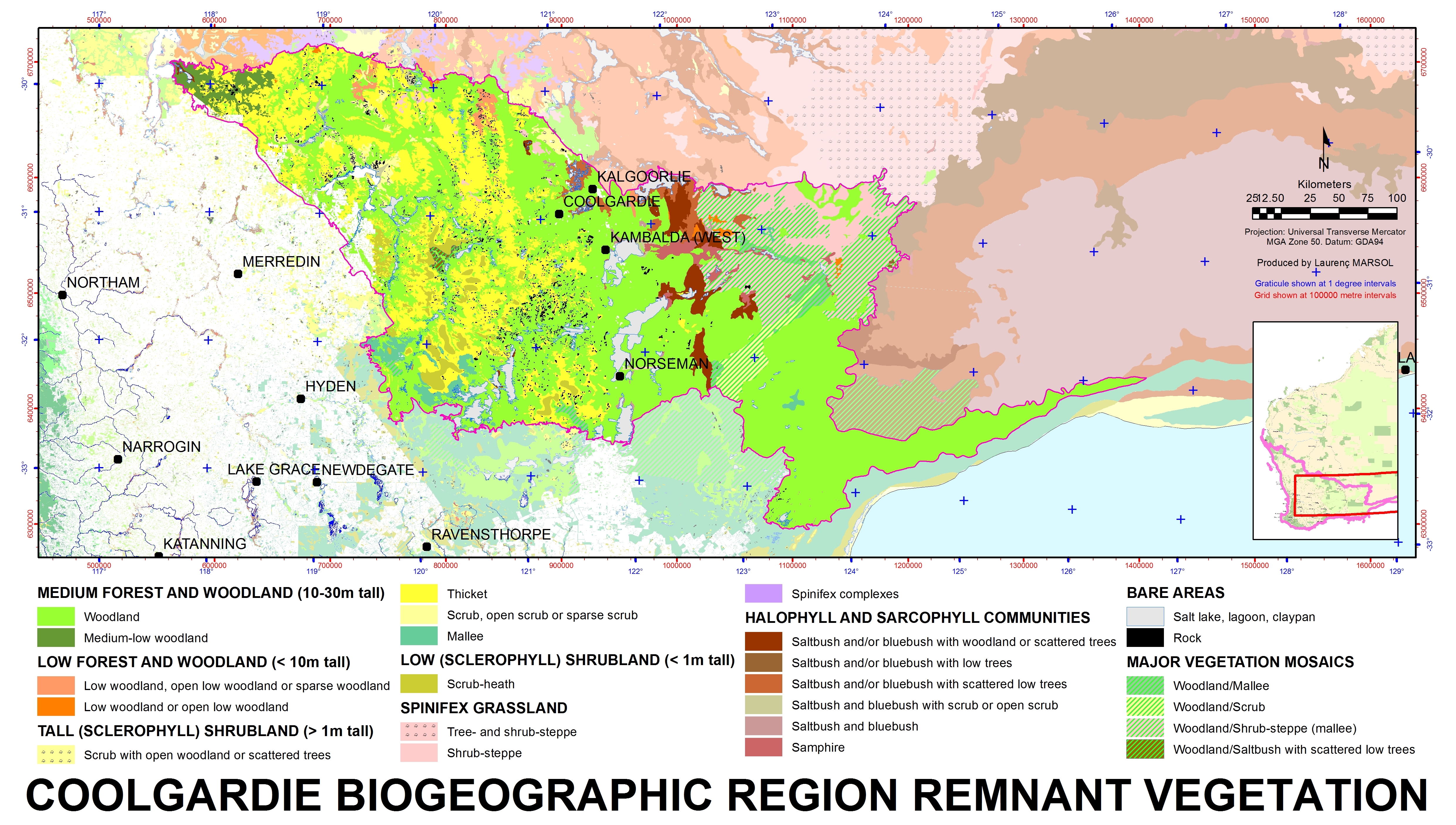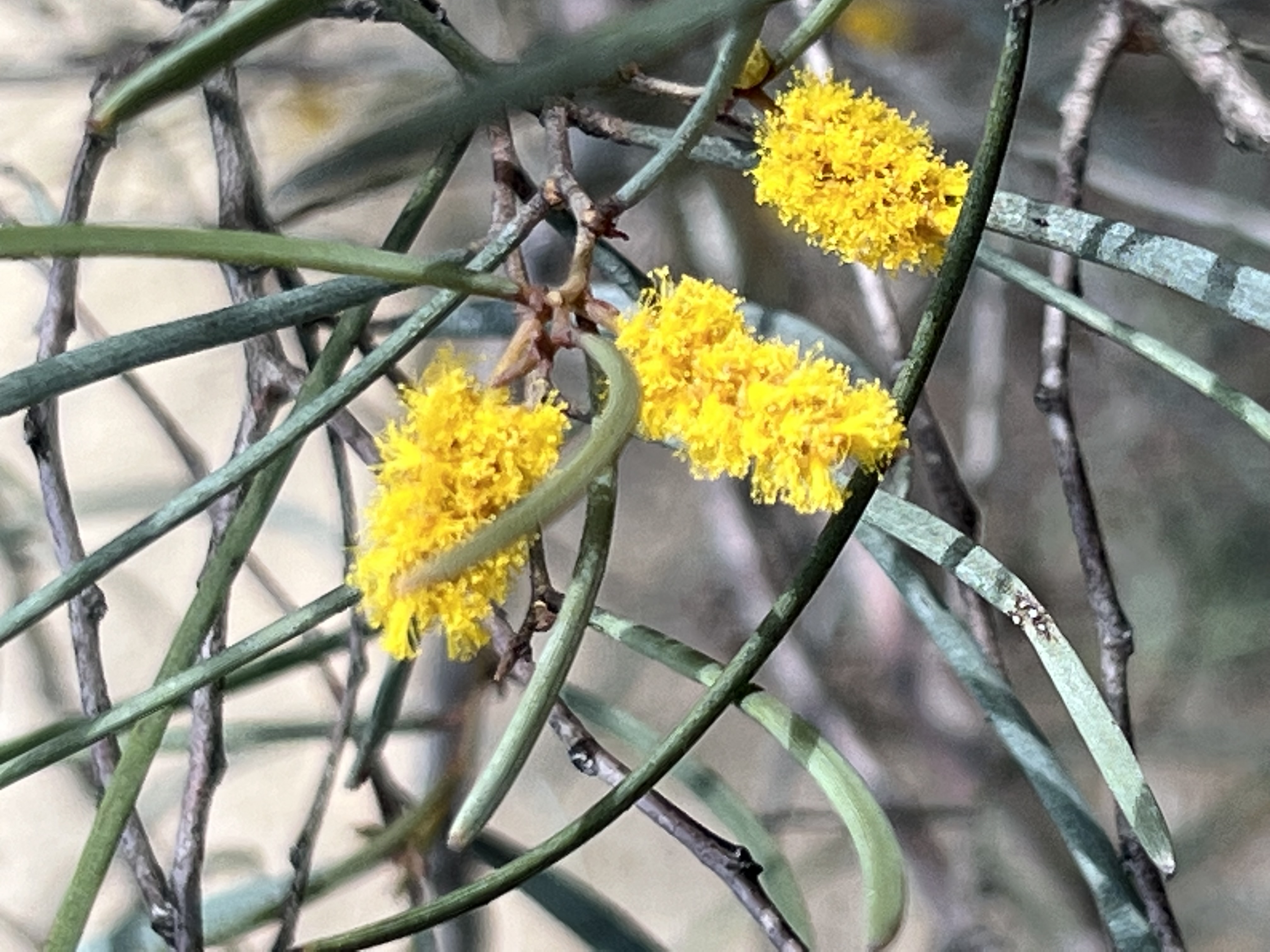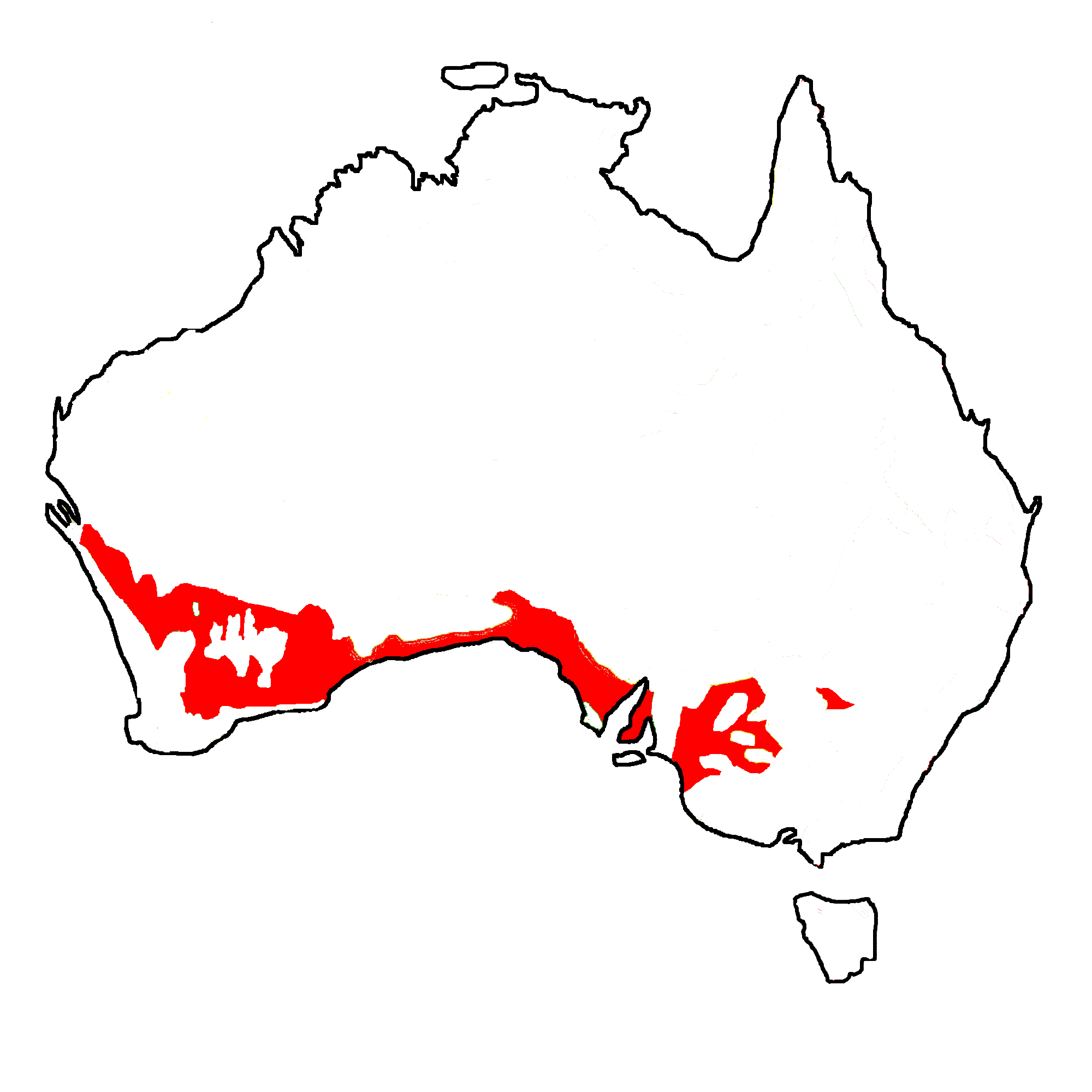|
Acacia Burkittii
''Acacia burkittii'', Burkitt's wattle, gunderbluey, pin bush, sandhill wattle and fine leaf jam, is a species of flowering plant in the family Fabaceae and is endemic to arid parts of southern continental Australia. It is a shrub or tree, usually with many stems, erect, linear to thread-like phyllodes, oblong to cylindrical spike of golden-yellow flowers and firmly papery pods appearing like a string of beads. Description ''Acacia burkittii'' is a shrub or tree that typically grows to a height of and usually has many stems. The bark on the main trunks is fissured and dark brown. Its phyllodes are upright to erect, linear to thread-like, mostly long and wide, cylindrical to four-sided in cross section. There is a curved, pointed but not sharp, tip on the end of the phyllodes. The flowers are golden yellow and arranged in one or two sessile, oblong to cylindrical spikes in axils, and are long. Flowering mainly occurs from July to October, and the pods are firmly papery to th ... [...More Info...] [...Related Items...] OR: [Wikipedia] [Google] [Baidu] |
Gawler Ranges National Park
Gawler Ranges National Park is a protected area lying north-west of Adelaide in the northern Eyre Peninsula of South Australia. It is known for its spectacular rock formations. History The national park originated as the Paney Station pastoral lease, which was acquired in 2000 by the South Australian Government with assistance from the Australian Government. In 2001 some of the adjacent Scrubby Peak Station was acquired and added to the national park. Access The national park is north of Wudinna, north-east of Minnipa and is accessible using high ground clearance two wheel drive vehicles via the gravel roads from Kimba, South Australia, Kimba, Wudinna, South Australia, Wudinna or Minnipa, South Australia, Minnipa. Camping is permissible and encouraged at several campgrounds. Although some have toilets, there are minimal other facilities and visitors are encouraged to take adequate food, water, fuel and firewood with them. Features Historic sites in the national park in ... [...More Info...] [...Related Items...] OR: [Wikipedia] [Google] [Baidu] |
Flora Australiensis
''Flora Australiensis: a description of the plants of the Australian Territory'', more commonly referred to as ''Flora Australiensis'', and also known by its standard abbreviation ''Fl. Austral.'', is a seven-volume Flora of Australia published between 1863 and 1878 by George Bentham, with the assistance of Ferdinand von Mueller. It was one of the famous Kew series of colonial floras, and the first flora of any large continental area that had ever been finished. In total the flora included descriptions of 8125 species.Orchard, A. E. 1999. Introduction. In A. E. Orchard, ed. ''Flora of Australia - Volume 1'', 2nd edition pp 1-9. Australian Biological Resources Study Bentham prepared the flora from Kew; with Mueller, the first plant taxonomist residing permanently in Australia, loaning the entire collection of the National Herbarium of Victoria to Bentham over the course of several years. Mueller had been dissuaded from preparing a flora from Australia while in Australia by Benth ... [...More Info...] [...Related Items...] OR: [Wikipedia] [Google] [Baidu] |
Gibson Desert
The Gibson Desert is a large desert in Western Australia, largely in an almost pristine state. It is about in size, making it the fifth largest desert in Australia, after the Great Victoria, Great Sandy, Tanami and Simpson deserts. The Gibson Desert is both an interim Australian bioregion and desert ecoregion. Location and description The Gibson Desert is located between the saline Kumpupintil Lake and Lake Macdonald along the Tropic of Capricorn, south of the Great Sandy Desert, east of the Little Sandy Desert, and north of the Great Victoria Desert. The altitude rises to just above in places. As noted by early Australian explorers such as Ernest Giles large portions of the desert are characterized by gravel-covered terrains covered in thin desert grasses and it also contains extensive areas of undulating red sand plains and dunefields, low rocky/gravelly ridges and substantial upland portions with a high degree of laterite formation. The sandy soil of the lateri ... [...More Info...] [...Related Items...] OR: [Wikipedia] [Google] [Baidu] |
Geraldton Sandplains
Geraldton Sandplains is an Interim Biogeographic Regionalisation for Australia, interim Australian bioregion of Western Australia. It has an area of . The Geraldton Sandplains is part of the larger Southwest Australia savanna ecoregion, as assessed by the World Wildlife Fund. Subregions See also * Shark Bay, Western Australia References Further reading * Thackway, R and I D Cresswell (1995) ''An interim biogeographic regionalisation for Australia : a framework for setting priorities in the National Reserves System Cooperative Program'' Version 4.0 Canberra : Australian Nature Conservation Agency, Reserve Systems Unit, 1995. Biogeography of Western Australia IBRA regions Plains of Australia Mediterranean forests, woodlands, and scrub in Australia Southwest Australia {{WesternAustralia-stub ... [...More Info...] [...Related Items...] OR: [Wikipedia] [Google] [Baidu] |
Gascoyne Bioregion
Gascoyne is an interim Australian bioregion located in Western Australia. It has an area of . Together with Murchison bioregion to the south, it constitutes the Western Australian Mulga shrublands ecoregion, as assessed by the World Wildlife Fund The World Wide Fund for Nature (WWF) is a Swiss-based international non-governmental organization founded in 1961 that works in the field of wilderness preservation and the reduction of human impact on the environment. It was formerly named the .... Subregions It has three subregions named after localities or areas in the region: *Ashburton GAS01 3,687,030 hectares (9,110,800 acres) *Carnegie GAS02 4,718,656 hectares (11,660,050 acres) *Augustus GAS03 9,669,571 hectares (23,894,030 acres) Protected areas Protected areas in the bioregion include: * Barlee Range Nature Reserve * Birriliburu Indigenous Protected Area * Collier Range National Park * Mount Augustus National Park References Further reading * Thackway, R ... [...More Info...] [...Related Items...] OR: [Wikipedia] [Google] [Baidu] |
Coolgardie Bioregion
Coolgardie is an Australian bioregion consisting of an area of low hills and plains of infertile sandy soil in Western Australia. It has an area of . It includes much of the Great Western Woodlands. Location and description This is a transition zone between the Mediterranean climate of Australia's south-west coast and the country's dry interior. The poor soil makes it unsuitable for agriculture but Coolgardie has been a gold and nickel mining area. It is bounded on the north by the arid Murchison bioregion, characterised by open Mulga woodlands and steppe. The low shrublands of the arid Nullarbor Plain lie to the east. The Mallee bioregion adjoins Coolgardie on the south. The Avon Wheatbelt bioregion is to the west. The Coolgardie bioregion, together with the coastal Hampton bioregion to the southeast, constitute the Coolgardie woodlands ecoregion defined by the World Wildlife Fund. Flora and fauna The low hills are home to woodland of endemic species of eucalyptus while ... [...More Info...] [...Related Items...] OR: [Wikipedia] [Google] [Baidu] |
Central Ranges
Central Ranges (code CER) is an Australian bioregion, with an area of 101,640.44 square kilometres (39,244 sq mi) spreading across two states and one territory: South Australia, Western Australia, and the Northern Territory.IBRA Version 6.1 It forms a large part of the World Wide Fund for Nature
The World Wide Fund for Nature (WWF) is a Swiss-based international non-governmental organization founded in 1961 that works in the field of wilderness preservation and the reduction of human impact on the environment. It was formerly named th ... [...More Info...] [...Related Items...] OR: [Wikipedia] [Google] [Baidu] |
Avon Wheatbelt
The Avon Wheatbelt is a bioregion in Western Australia. It has an area of . It is considered part of the larger Southwest Australia savanna ecoregion. Geography The Avon Wheatbelt bioregion is mostly a gently undulating landscape with low relief. It lies on the Yilgarn craton, an ancient block of crystalline rock, which was uplifted in the Tertiary and dissected by rivers. The craton is overlain by laterite deposits, which in places have decomposed into yellow sandplains, particularly on low hills. Steep-sided erosional gullies, known as breakaways, are common. Beecham, Brett (2001). "Avon Wheatbelt 2 (AW2 - Re-juvenated Drainage subregion)" in ''A Biodiversity Audit of Western Australia’s 53 Biogeographical Subregions in 2002''. Department of Conservation and Land Management, Government of Western Australia, November 2001. Accessed 15 May 2022/ref> In the south and west (the Katanning subregion), streams are mostly perennial, and feed rivers which drain westwards to empt ... [...More Info...] [...Related Items...] OR: [Wikipedia] [Google] [Baidu] |
Acacia Aneura
''Acacia aneura'', commonly known as mulga, is a species of flowering plant in the family Fabaceae and is endemic to inland Australia. It is a variable shrub or small tree with flat, narrowly linear to elliptic phyllodes, cylindrical spikes of bright yellow flowers and more or less flat and straight, leathery Pod (fruit), pods. Description ''Acacia aneura'' is a variable shrub or small tree that typically grows to a height of , sometimes up to and is often multistemmed with a bushy Crown (botany), crown. Its phyllodes are flat, narrowly linear to narrowly elliptic, long and mostly wide, straight or slightly curved. The flowers are borne in a cylindrical head in the axils of phyllodes on a hairy Peduncle (botany), peduncle long. The heads are long and bright yellow. Flowering occurs from March to May or August and the pod is more or less straight and flat, long and wide with a winged edge. The pods are papery, brown to greyish-brown, containing elliptic to oblong or e ... [...More Info...] [...Related Items...] OR: [Wikipedia] [Google] [Baidu] |
Eucalypt
Eucalypt is any woody plant with Capsule (fruit), capsule fruiting bodies belonging to one of seven closely related genera (of the tribe Eucalypteae) found across Australia: ''Eucalyptus'', ''Corymbia'', ''Angophora'', ''Stockwellia'', ''Allosyncarpia'', ''Eucalyptopsis'' and ''Arillastrum''. In Australia, they are commonly known as gum trees or stringybarks. Taxonomy For an example of changing historical perspectives, in 1991, largely genetic evidence indicated that some prominent ''Eucalyptus'' species were actually more closely related to ''Angophora'' than to other eucalypts; they were accordingly split off into the new genus ''Corymbia''. Although separate, all of these genera and their species are allied and it remains the standard to refer to the members of all seven genera ''Angophora'', ''Corymbia'', ''Eucalyptus'', ''Stockwellia'', ''Allosyncarpia'', ''Eucalyptopsis'' and ''Arillastrum'' as "eucalypts" or as the eucalypt group. The extant genera ''Stockwellia'', ''A ... [...More Info...] [...Related Items...] OR: [Wikipedia] [Google] [Baidu] |
Mallee Woodlands And Shrublands
Mallee Woodlands and Shrublands is one of 32 List of Major Vegetation Groups in Australia, Major Vegetation Groups defined by the Australian Government Department of the Environment and Energy and one of the 189 habitats in the HOTW habitats of the World classification. Description "Mallee (habit), Mallee" refers to the growth habit of a group of (mainly) eucalypt species that grow to a height of , have many stems arising from a lignotuber and have a leafy canopy that shades 30–70% of the ground. The term is also applied to a vegetation association where these mallee eucalypts grow, on land that is generally flat without hills or tall trees and where the climate is semi-arid. Of the 32 Major Vegetation Groups classified under the National Vegetation Information System, "Mallee Woodlands and Shrublands" (MVG14): * are semi-arid areas dominated by mallee eucalypts; * may also have co-dominant species of ''Callitris'', ''Melaleuca'', ''Acacia'' and ''Hakea''; * have an open tree ... [...More Info...] [...Related Items...] OR: [Wikipedia] [Google] [Baidu] |
South Australia
South Australia (commonly abbreviated as SA) is a States and territories of Australia, state in the southern central part of Australia. With a total land area of , it is the fourth-largest of Australia's states and territories by area, which includes some of the most arid parts of the continent, and with 1.8 million people. It is the fifth-largest of the states and territories by population. This population is the second-most highly centralised in the nation after Western Australia, with more than 77% of South Australians living in the capital Adelaide or its environs. Other population centres in the state are relatively small; Mount Gambier, the second-largest centre, has a population of 26,878. South Australia shares borders with all the other mainland states. It is bordered to the west by Western Australia, to the north by the Northern Territory, to the north-east by Queensland, to the east by New South Wales, to the south-east by Victoria (state), Victoria, and to the s ... [...More Info...] [...Related Items...] OR: [Wikipedia] [Google] [Baidu] |







